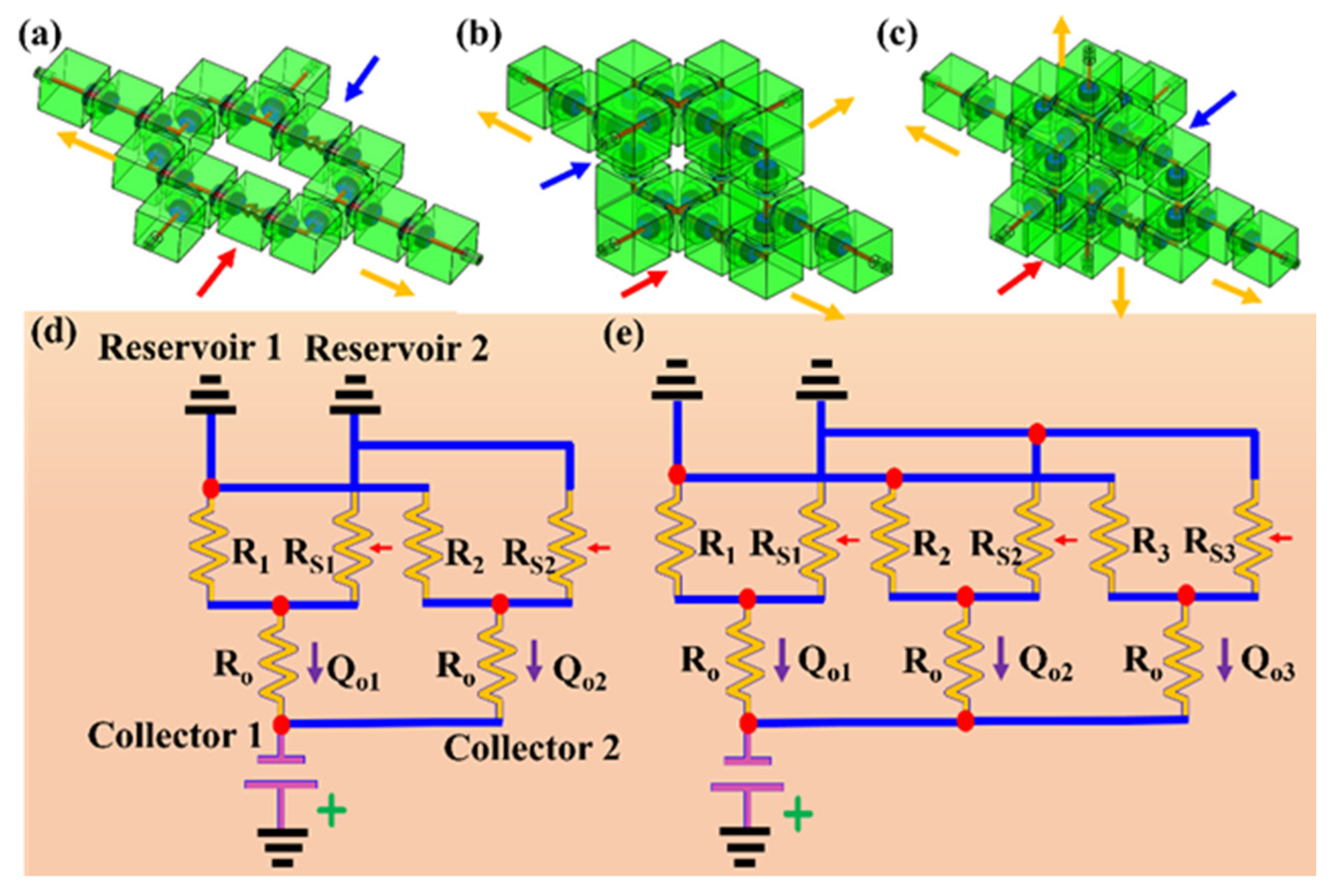Chinese researchers from the School of Mechanical and Electronic Engineering at Lingnan Normal University are examining ways to improve the use of microfluidics, outlining their research in the recently published ‘3D Printed Reconfigurable Modular Microfluidic System for Generating Gel Microspheres.’
In this study, the research team developed an interconnected network of microfluidics meant to prevent common challenges—especially limitations for designers in creating more complex systems. Reconfigurable microfluidics are meant to form more integrated systems, allowing for biochemical functions such as:
- Emulsion generation
- Multi-organ chips
- Gradient generation
- Biochemical analysis
“Existing systems often use a monolithic approach, where chemical reactors, sensors, valves, pumps, and detectors are integrated on a single chip,” explain the researchers. ”The typical fabrication methods of monolithic microfluidic systems, which include soft lithography, hot embossing, and femtosecond laser writing, are time consuming and often expensive. Additionally, the complicated fabrication processes would require more attention to the quality control.”
A breakdown within a monolithic system then requires a complete reconstruction of the entire microfluidic system—adding time and expense to a research project. With a modular system, specific parts can be replaced when an issue arises—and they can also be designed and tested separately before integration into the entire system. Modular devices can be constructed quickly—in mere minutes—but they must also be finished with extra bonding and sealing, requiring added time, expense, and expertise.
The modular system specific to this study offers advanced microfluidics with varying geometries. They make up a complex system yet are simple to put together consisting of a screw fastener and an assembly module. Each module is assigned a function, whether it serves as an inlet or an outlet, as a channel, valve, reservoir, or has another purpose.

Schematic illustration of 3D printed microfluidic modular components. (a) basic microchannel unit. (b) functional microchannel unit. (c) multifunctional microfluidic system. The device consists of multiple basic channels and functional channels using screw connector.
The researchers designed the 3D model samples (measuring 10 x 10 x 10 mm3) with SolidWorks and then 3D printed them on a ProJet®D3510 SD, using VisiJet® Crystal material (and VisiJet® S300 for waxy support material). After 3D printing, the modules were connected via screw pin connectors.

Micrographs of the chip surface quality. (a) surface quality and surface roughness before treatment. (b) surface quality and surface roughness after polishing and polydimethylsiloxane (PDMS) treatment coating. (c) image of 3D printed module components.
Surface quality was deemed excellent, and both surface polishing and the use of PDMS coating were ‘very effective.’

Connectivity of the modular microfluidic system. (a) schematic of modular assembly of embedded connections. (b) schematic illustration of modular assembly with threaded connections. (c) leakage experiment of embedded connected microfluidic system. (d) leakage experiment of threaded connected microfluidic system (untightened thread). (e) leakage experiment of threaded connected microfluidic system (tightened thread).
Testing also entailed evaluation of the screw fastener through employing an embedded connection, and ‘untightening’ and tightening of the thread. Digital pressure gauges were also used to test for leaks.

(a) schematic illustration of microfluidic system assembly with mixed channel module. (b) simulation of mixing effects for straight channel and mixer channel modules. (c) normalized concentration of the outlet for the straight channel and mixer channel modules, respectively (the terminal of the microchannel). (d,e) mixing effects of fluids in straight channel and mixer channel modules.
“… the method of screw connection was simple and fast,” explained the researchers. “It could be disassembled and reassembled repeatedly to build different functions of novel microfluidic system. It is widely applied in biochemical fields such as fluid mixing and droplet generation. Importantly, the threaded connection provided high fluid pressure, avoiding fluid leakage problems, and expanding its application.”

The tunable mixer with (a) two, (b) three, and (c) four outlets. (d,e) comparison of equivalent circuit models for two- and three-outlet parallelized configurations of the tunable mixer system.
The range of sample modules were all connected with the screw fastener, and ultimately because of the ease in assembly, the researchers stated that this system would be suitable for non-expert users.
“Furthermore, the integrated microfluidic device was also applied as multi-analyte mixing and multi-emulsion generation. This modular microfluidic system has a tremendous potential for realizing mass-production complexes and multiplex systems for the commercialization of the microfluidic platform,” concluded the researchers.
Microfluidics continue to be a source of research and study for scientists today, in work with organ-on-chips, integration with sensors, and with projects requiring miniaturization. What do you think of this news? Let us know your thoughts; join the discussion of this and other 3D printing topics at 3DPrintBoard.com.
[Source / Images: ‘3D Printed Reconfigurable Modular Microfluidic System for Generating Gel Microspheres’]Subscribe to Our Email Newsletter
Stay up-to-date on all the latest news from the 3D printing industry and receive information and offers from third party vendors.
You May Also Like
3D Printing News Unpeeled: A $3000 SLS System, Construction Subsidies and Parameters
The Housing Affordability Crisis is one of Canadian President Trudeau’s biggest issues. Now the government has made subsidies available, including scaling new technologies, 3D printed housing and libraries of reapproved...
“Bundled Light” Enables High Quality Plastic 3D Printing from LEAM
Naturally, we expect current 3D printing methods to continuously improve, but it continues to do so in the most surprising ways. The latest development comes from LEAM, a startup spun...
Each to Their Own: Exploring Creality’s Latest Ender Trio as the Company Strengthens Its Commitment to 3D Printing Advocacy
Creality has reaffirmed its commitment to promoting 3D printing. The launch of the Ender-3 V3 SE, Ender-3 V3 KE, and Ender-3 V3 showcases the company’s dedication to catering to diverse...
3D Printing News Briefs, March 23, 2024: AM in the US Coast Guard, Navy, & More
In today’s 3D Printing News Briefs, we’re discussing the use of 3D printing in various branches of the military, including the U.S. Coast Guard, the U.S. Navy, and the German...































